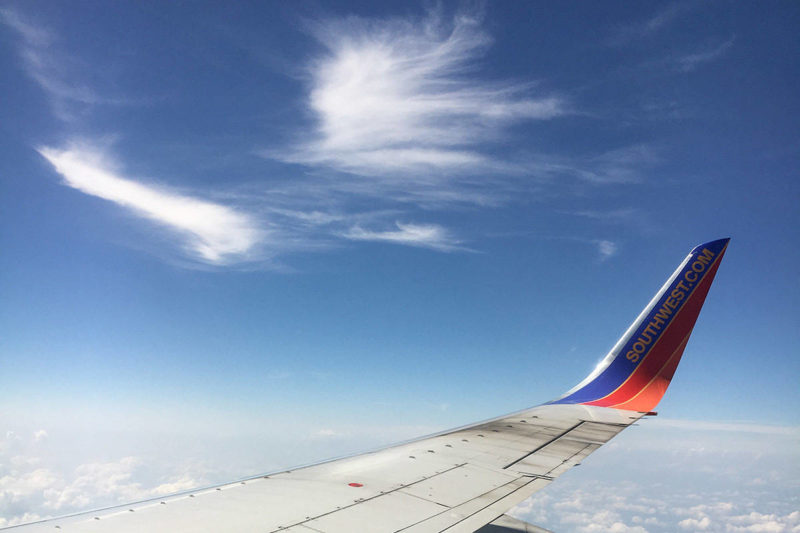“Every seat has a story,” Brooks Thomas, Social Business Advisor for Southwest Airlines recently told a crowd of PR professionals. “Whether it’s an adventure drawing to a close or a new chapter beginning, everybody’s going somewhere for a reason.”
In his keynote at Public Relations Society of America’s Travel & Tourism Conference, Thomas highlighted how authentic stories, social media listening and fast action power Southwest’s brand journalism strategy.
The airline has a 24/7 social listening center with 42 people on the social team. 31 of them are focused on customer care. The team’s goal is to respond quickly – response times on Twitter are 15 minutes or less. The brand wants you to know that someone is always listening, ready to meet your needs. But listening has another, extremely powerful benefit. Listening allows the social team to uncover authentic, compelling stories that could never be brainstormed in a communications meeting.
Case in point, the story of a 6 year old boy named Hudson Hughes.
Hudson and his family love to go to the airport and watch the planes take off. On one of their trips, Hudson waved at a Southwest on the taxiway. To his delight, the pilot inside the plane noticed the little wave from yards away and stopped his plane to wave back. Even more amazing? The boy’s mom captured the moment on camera, and shared the photo with Southwest on Facebook.
The Southwest team noticed the post and zoomed into the photo to find markets on the plane that would help them track down the pilot. As soon as they found the captain, they shared the photo with him and asked if he would be willing to meet Hudson. Three days after that fateful wave on the runway, Hudson and the pilot were brought together again for a behind the scenes tour of the plane.
Because the Southwest team was listening to Facebook, they were able to share this incredible story with the brand’s audience through this sweet video:
This video is far more magical than anything a brand’s video team could have produced with a script and a cast of actors. The story is the perfect combination of authenticity, heart and fast-action.
We caught up with Thomas after his keynote to learn a little bit more about Southwest’s brand journalism strategy. He explained that quick turnaround is key to the success of this story, as well as many others that come out of the social media listening center.
Since this story was launched, it has become one of the capstone case studies in Southwest’s hospitality training. The brand wants every employee to emulate the pilot who went out of his way to make a little boy smile. The story highlights Southwest’s culture, its attention to customers and its commitment to celebrating employees in an authentic way. Thomas explained that authenticity is vital for the brand’s communications, both internally and externally.
Passion is a key ingredient in Southwest’s storytelling. In Hudson’s story, employees went the extra mile every step of the way. The pilot stopped the plane to wave. The social media team honed in on a single, extraordinary post in a barrage of social media notifications, and decided it was worth investigating. The communication team recognized the moment as a story worth capturing (too often, stories get lost because people don’t think to document them). The video team turned the story around in a matter of days. None of this can happen without passionate employees.
Thomas added that when the airline ran a survey asking employees to describe their work at Southwest, 71% responded, “It is my calling.” Because the brand’s employees care about their work, the social team has an abundance of organic stories to uncover. And because they are acting as brand journalists, they are able to turn those stories into fantastic visual content that delights both employees and brand fans, reinforcing the storytelling cycle.
The Takeaway
Your brand has the power to turn everyday moments into inspiring visual content if you:
- Listen to your fans across platforms.
- Motivate your employees to make these special moments happen, and encourage them to share them with your communications team.
- Act quickly to turn stories around before they are forgotten or other priorities get in the way.
- Recognize the potential of a simple moment to become a powerful story.
- Capture and share the story through visual media to engage your fans and help the story reach a broader audience.
Learn more from PRSA Travel 2016:
- Public Relations Tips from Travel Channel Host Brian Unger
- 11 Public Relations Tips for Travel & Tourism from PRSA Travel 2016
Cover photo by Kristin Twiford.




